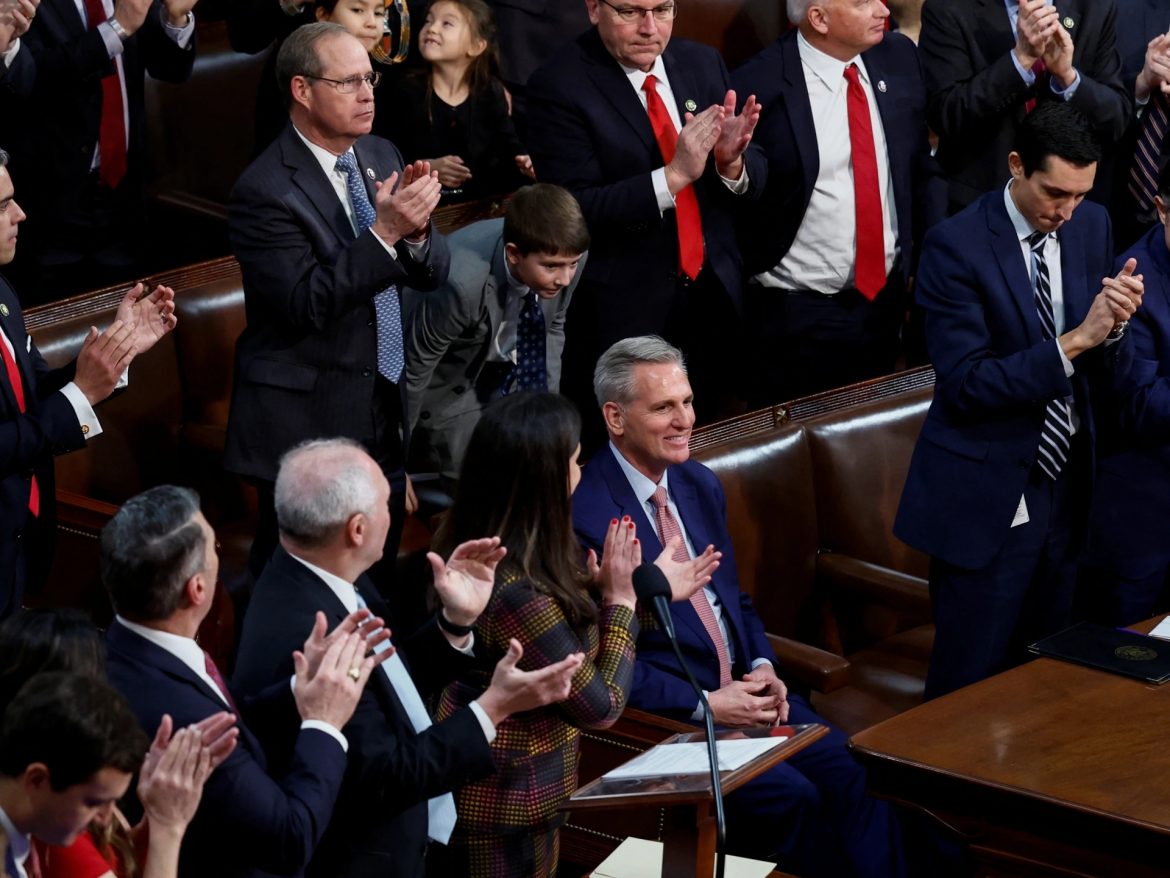Photo Credit: Al Jazeera
Congress has elected a new Speaker of the House after the 2022 US midterm elections
Sulaiman Hashim Khan, Staff Writer
Following the 2022 US midterm elections, the 118th United States Congress assembled — with the Republican Party having gained control of the House of Representatives with a small majority. The House now hosts 222 Republicans and 212 Democrats.
The small Republican majority comes after months of speculation over a “red wave” flooding the House.
The early days of January saw the House of Representatives undergo a hectic Speaker election, the likes of which have not been seen since 1855. Republican representative from California, Kevin McCarthy was elected to the Speaker position on January 7th, after fifteen rounds of voting.
The United States legislative body operates through a bicameral system, with the Senate and House of Representatives serving as the upper and lower houses, respectively.
McCarthy had to win the support of at least 218 members of the House to gain the Speaker’s gavel. This involved rule negotiations with remaining holdout Republican representatives who voted against him. The negotiations include concessions on House spending; single-member allowance for the Motion to Vacate the Chair; budgetary negotiations; as well as a deal that promises more committee positions to members of the Freedom Caucus — the farthest right-wing, conservative voting bloc in the House.
The United States Congress holds elections every two years, with members of the lower house serving for four-year terms and senators holding six-year terms. There are no term limits imposed on members of the House of Representatives as long as they are voted in by a majority in their congressional district. There is no limit to the number of times a representative can be elected Speaker of the House.
Unlike Canada’s constitutional monarchy, the United States is a presidential republic. The head of state and chief executive — the president of the United States — is elected separately from the legislation. This leaves the position of the leader of the House majority vacant. While the Speaker is not the same as the majority leader in the lower house, he or she still has more power over the majority party than the named majority leader, Steve Scalise in this case. The Speaker of the House position is therefore closer to something between the Prime Minister and Speaker of the House of Commons in Canada, in terms of the election process and the powers that come with the role, such as making key decisions in the lower house and organizing the House parties.




